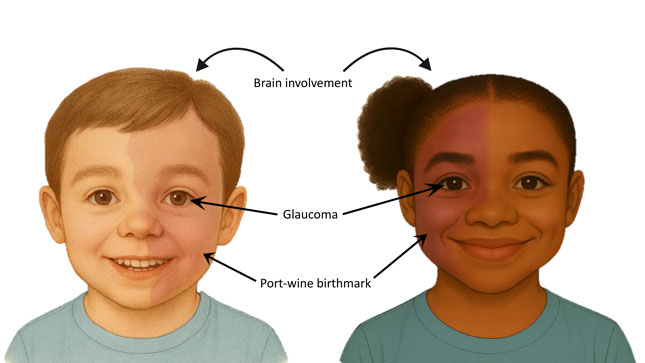What is Sturge Weber Syndrome?

Sturge-Weber syndrome is a neurovascular condition where a child is born with a port-wine birthmark and is found to have abnormal blood vessels in their brain and eye. These abnormal blood vessels can cause problems for that child, including seizures, strokes, weakness, vision loss and a range of intellectual or developmental challenges.
Patients with SWS may also develop other medical issues such as endocrine problems, psychological issues and behavioral or mood difficulties. The presence of a port-wine birthmark involving the forehead or upper eyelid region raises the suspicion of SWS. These children must be followed closely and carefully by experts in order to diagnose brain and eye involvement and to treat complications as they arise. A port-wine birthmark can be confused with the stork-bite (also called an angel’s kiss) birthmark, or with a capillary hemangioma. A dermatologist should examine the birthmark to confirm the diagnosis.
